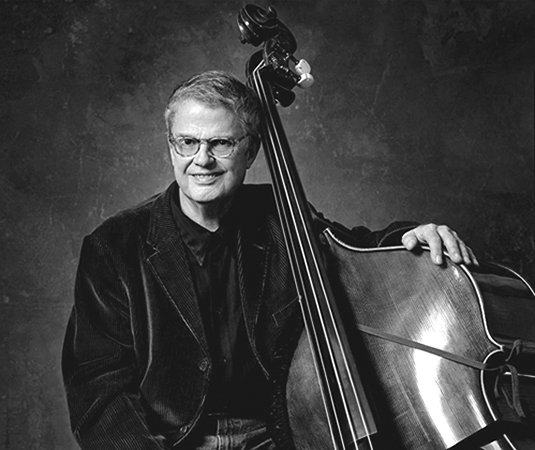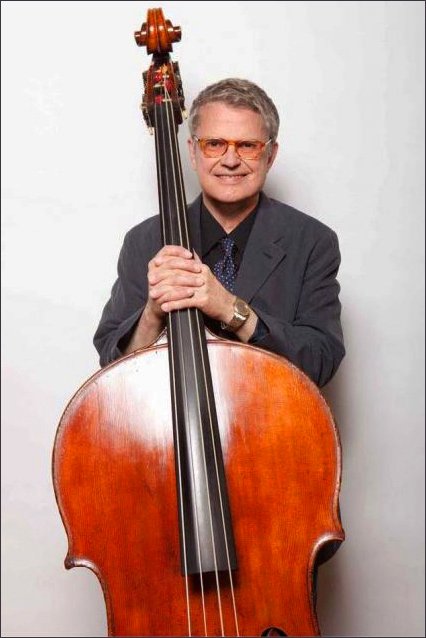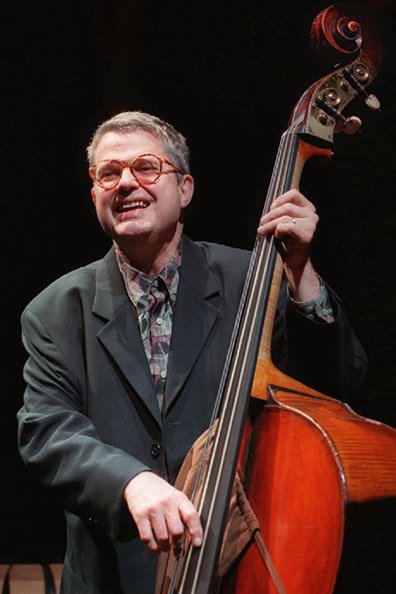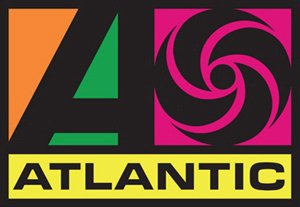Ornette Coleman (saxo alto), Don Cherry (trompeta de bolsillo), Charlie Haden (contrabajo) y Billy Higgins (batería). Extraído del álbum Change of the Century (1960).
Charlie Hader era un contrabajista de jazz, compositor y profesor de música norteamericano cuya carrera musical duró más de cincuenta años, y que transformó el uso de la armonía en el contrabajo en el jazz. A veces complementaba al solista y otras tocaba de forma independiente liberándose del papel de acompañamiento para convertirse en un participante más en la improvisación grupal. Su técnica era limitada, pero su sonido cálido y profundo, y su capacidad de expresión, eran tan intensos como los de cualquier otro contrabajista de jazz. En lugar de enfocarse en la velocidad y la agilidad, Haden exploró sutilmente las posibilidades timbrales de su instrumento con una mano segura y un oído sensible. Nacido en la ciudad de Shenandoah, se interesó en el jazz a los catorce años cuando asistió a un concierto del saxofonista alto y padre del bebop Charlie Parker y la big band de Stan Kenton. Se trasladó a Los Ángeles en 1957, donde hizo sus primeras grabaciones con el pianista Paul Bley, con quien trabajó hasta 1959. También tocó con el saxofonista alto Art Pepper y el pianista Elmo Hope en 1957, y con el pianista Hampton Hawes en 1958 y 1959. En este último año grabó con el saxofonista alto Ornette Coleman The Shape of Jazz to Come, el primero de varios álbums trascendentales en el nacimiento y desarrollo del free jazz, en los que también participó.
Charlie Hader was an American jazz double bassist, composer and music teacher whose musical career lasted more than fifty years, and who transformed the use of harmony in the double bass in jazz. Sometimes he complemented the soloist and other times played independently freeing himself from the accompaniment role to become another participant in the group improvisation. His technique was limited, but his warm and deep sound, and his capacity for expression, were as intense as any other jazz double bass player. Instead of focusing on speed and agility, Haden subtly explored the timbral possibilities of his instrument with a confident hand and a sensitive ear. Born in the city of Shenandoah, he became interested in jazz at the age of fourteen when he attended a concert by alto saxofonist and father of bebop Charlie Parker and Stan Kenton’s big band. He moved to Los Angeles in 1957, where he made his first recordings with pianist Paul Bley, with whom he worked until 1959. He also played with alto saxofonist Art Pepper and pianist Elmo Hope in 1957, and with pianist Hampton Hawes in 1958 and 1959. In this last year he recorded with alto saxofonist Ornette Coleman The Shape of Jazz to Come, the first of several transcendental albums in the birth and development of free jazz in which he also participated.

Durante los años sesenta, Haden también tocó con el saxofonista alto John Handy, el saxofonista tenor Archie Shepp y el trombonista Roswell Rudd, entre otros, y formó su propia big band, la Liberation Music Orchestra. De 1967 a 1976 trabajó en el trío, cuarteto y quinteto del pianista Keith Jarrett y después organizó el colectivo Old and New Dreams. Durante los años ochenta y noventa hizo extensas giras con su Liberation Music Orchestra. En 1982 creó el programa de estudios de jazz en el California Institute of the Arts. En 1986 formó el grupo de bebop Quartet West, con el que publicó Quartet West (1987). A Haden le gustaba tocar en dúo, así que en 1995 grabó con el pianista Hank Jones y en 1996 con el guitarrista Pat Metheny. En 1997, el compositor clásico Gavin Bryars escribió By the Vaar, un adagio extendido para él. En el 2005, Haden volvió a reunir su Liberation Orchestra para grabar Not In Our Name, una protesta contra la invasión de Estados Unidos de Iraq. En el 2009 volvió a grabar en dúo, esta vez con el pianista Kenny Barron. En el 2010 grabó también a dúo con Keith Jarrett el álbum Jasmine como banda sonora de la película sobre su vida Rambling Boy de Reto Caduff. Sus últimos trabajos fueron Sophisticated Ladyes con su grupo Quartet West y un conjunto de cuerdas arregladas por Alan Broadbent, y Live at Birtland con Lee Konitz, Brad Mehldau y Paul Motian. Murió en Los Ángeles en el 2014 a los 76 años de edad.
During the 1960s, Haden also played with alto saxofonist John Handy, tenor saxofonist Archie Shepp and trombonist Roswell Rudd, among others, and founded his own big band, the Liberation Music Orchestra. From 1967 to 1976 he worked with pianist Keith Jarrett’s trio, quartet and quintet and later organized the Old and New Dreams collective. During the 1980s and 1990s he toured extensively with his Liberation Music Orchestra. In 1982 he created the jazz studies program at the California Institute of the Arts. In 1986 he formed the bebop group Quartet West, whith which he published Quartet West (1987). Haden liked to play in duet, so in 1995 he recorded with pianist Hank Jones and in 1996 with guitarist Pat Metheny. In 1997, classical composer Gavin Bryars wrote By the Vaar, an extended adagio for him. In 2005, Haden rejoined his Liberation Orchestra to record Not In Our Name, a protest against the United States invasion of Iraq. In 2009 he recorded again in duet, this time with pianist Kenny Barron. In 2010 he released the album Jasmine also in duet with Keith Jarrett as the soundtrack for the film about his life Rambling Boy by Reto Caduff. His last albums were Sophisticated Ladyes with his group Quartet West and a string ensemble arranged by Alan Broadbent, and Live at Birtland with Lee Konitz, Brad Mehldau and Paul Motian. He died in Los Angeles in 2014 at 76 years of age.


Este tema es vertiginoso y frenético. Después de su exposición Coleman toca frases entrecortadas e incoherentes mientras Haden aumenta la velocidad de su acompañamiento. A continuación entra Cherry haciendo un solo igualmente apresurado y caótico, en el más puro estilo free jazz, y para cerrar el grupo reexpone el tema.
This theme is vertiginous and frenetic. After its exposition Coleman plays choppy and incoherent phrases while Haden increases the speed of his accompaniment. Next Cherry enters making an equally hurried and chaotic solo, in the purest free jazz style, and to close the group re-exposes the theme.

Translated with the help of DeepL
℗ Atlantic Records


Si te ha gustado el tema, quizá querrás escuchar también los anteriores de este álbum:
If you liked the track, you might also want to listen to the previous ones on this album:
- «Una Muy Bonita» y programa de televisión sobre Don Cherry
- «Bird Food» y programa de televisión sobre Ornette Coleman
- «The Face of the Bass» y «Forerunner»
- «Ramblin’» y «Free»


¡Enhorabuena!
✅ Has hecho un buen trabajo, por lo cual tu publicación ha sido valorada y ha recibido el apoyo de parte de CHESS BROTHERS ♔ 💪
♟ Te invitamos a usar nuestra etiqueta #chessbrothers y a que aprendas más sobre nosotros.
♟♟ También puedes contactarnos en nuestro servidor de Discord y promocionar allí tus publicaciones.
♟♟♟ Considera unirte a nuestro trail de curación para que trabajemos en equipo y recibas recompensas automáticamente.
♞♟ Echa un vistazo a nuestra cuenta @chessbrotherspro para que te informes sobre el proceso de curación llevado a diario por nuestro equipo.
🥇 Si quieres obtener ganancias con tu delegacion de HP y apoyar a nuestro proyecto, te invitamos a unirte al plan Master Investor. Aquí puedes aprender cómo hacerlo.
Cordialmente
El equipo de CHESS BROTHERS